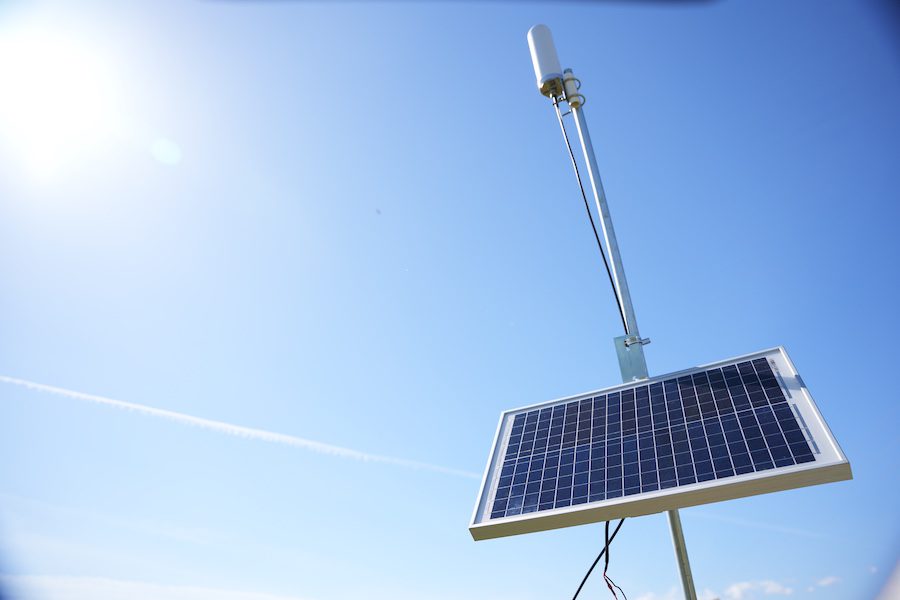How IOT Technology is Enabling True Irrigation Automation for Growers

Search “Irrigation Automation” for agriculture and you’ll find a handful of companies selling an irrigation controller that is used to send open/close commands to a 3rd party valve( Netafim, Nelson, etc) through a wire. On the surface, this sounds like automation, but talk to any grower and they’ll tell you that this is nothing more than a glorified timer system.
The problem with these “automation” systems is that there’s no two-way communication between the irrigation controller (the hub) and the 3rd party valves (the spokes). If there’s an issue with the valve not opening or closing when it’s supposed to, the person managing that system won’t know about it until they stumble across dried out or flooded crops.
This is one of the main reasons why these types of automation solutions are not widely adopted. Many growers who try these technologies, still find themselves needing to manually check whether or not everything went according to plan, and thus often revert back to doing things the more traditional, manual way.
The Inefficiencies of Irrigating Manually
Irrigating manually is still the preferred method for ~90% of growers due to its simplicity and high degree of control. While this method is relatively straightforward to manage, the lack of monitoring and access to data results in inefficiencies. For example, in addition to having to manually open and close valves, irrigators are often tasked with inspecting drip lines to identify leaks, breaks or clogged up emitters. It’s like looking for a needle in a haystack, and in some cases, there’s no needle (or problems) to be found in the first place.
In other instances issues aren’t identified until it’s too late, such as when a main line breaks, putting the water reservoir and pump equipment at risk. Manual systems simply aren’t equipped with the right technology (sensors, internet connectivity, etc.) to alert growers to when and where issues are taking place.
Where Irrigation Controllers Fall Short
Irrigation controllers attempt to address the lack of automation left by manually controlled systems by providing an internet connected base station that sends signals to solenoid valves. While the goal is to make it easy for vineyard owners to automatically run irrigations, the controllers face certain limitations that hinder their effectiveness.
For the most part, controllers lack reliable measurement and data input capabilities that come standard. Meaning that they can send instructions to valves, but can’t report back on whether those instructions were received or are being carried out. Without the ability to monitor the irrigation system effectively, vineyard owners are left in the dark, unsure of whether their irrigation is functioning optimally. It's like trying to drive a car without being able to see where you're going.
Many irrigation controller solutions also lack ownership over critical components within the system. When a valve or another essential component fails, they are often unable to provide support to resolve the issue. This lack of accountability can lead to prolonged downtime and frustration for vineyard managers and viticulturists who need irrigation systems to meet the real-time needs of current growing conditions.
Furthermore, controllers rely heavily on traditional technologies, such as the need to trench cables for power and connectivity. This adds to the high costs associated with this approach, increases the risk of failure, and limits the flexibility and scalability of the irrigation infrastructure.
Closing the Gap: True Automation Powered by IOT Technology
Thankfully, IOT technologies like Lumo are eliminating the information gap between what growers instruct their irrigation system to do and knowing what their system is actually doing. Lumo works by creating a mesh network of smart irrigation valves - IOT devices that are individually internet connected and have built-in sensors to track real-time water flow and system health (and of course, a valve that can be opened/closed remotely). This allows growers to deliver precise gallons/plant goals and detect issues like broken lines, malfunctioning pumps, or clogged emitters.
This is proving to be an effective solution that facilitates true automation in the following ways:
- Remote control of irrigation valves based on predetermined schedules
- Flow monitoring data that tells the grower that their irrigations are actually performing according to plan
- Fault detection - the ability to identify where potential issues are within the irrigation system (things like leaks, breaks or faulty pumps)
- Intervention - whether it be through notifications to the grower that something doesn’t look right or automatically stopping the system if critical errors are detected
Perhaps most importantly, Lumo takes ownership of every aspect of the irrigation solution, including the hardware, software and support. Users have peace of mind knowing that Lumo is accountable for overseeing and troubleshooting any health issues within the system.
Ultimately, Lumo sets itself apart by providing data-based feedback as a standard feature. This unlocks significant time and labor savings for growers by providing real-time insights into irrigation events. Finally, growers can make decisions with full clarity of exactly how and where water is flowing in their system, allowing for efficient water management.
This holistic approach makes Lumo more cost effective than piecemealing various products together. The result allows growers to benefit from modern technology without breaking the bank.
To learn more about how you can truly automate your irrigation efforts and optimize your labor and water resources, contacts us here or emails [email protected]